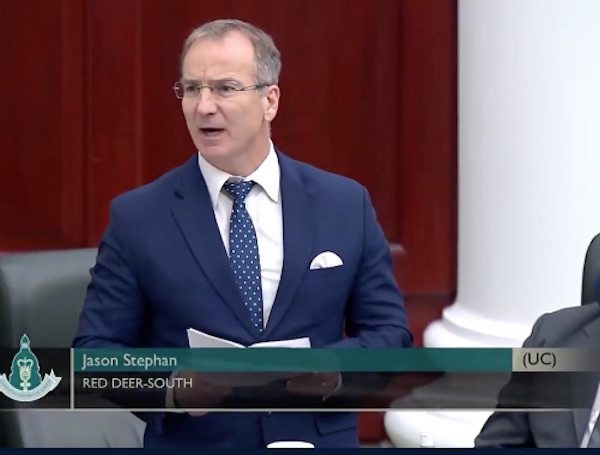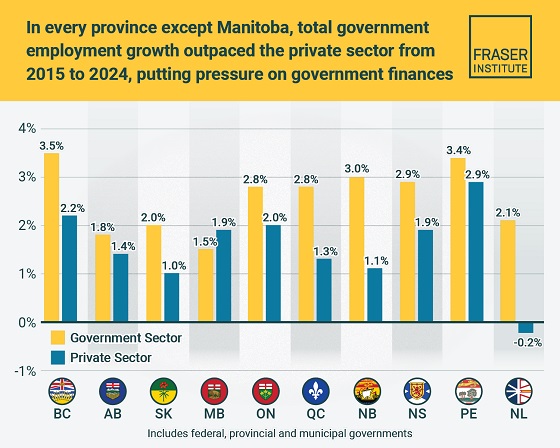Brownstone Institute
Ketanji Brown Jackson Defenestrates the First Amendment

From the Brownstone Institute
At her confirmation hearings, Justice Ketanji Brown Jackson claimed she lacked the expertise to define “woman.” Just two years later, she did not hesitate to redefine the First Amendment and free speech as she advocated for the regime to bulldoze our Constitutional liberties provided they offer sufficiently sanctimonious justifications.
At Monday’s oral arguments in Murthy v. Missouri, Jackson said her “biggest concern” was that the injunction, which prohibits the Biden Administration from colluding with Big Tech to censor Americans, may result in “the First Amendment hamstringing the Government.”
This, apparently, was of greater concern to Jackson than the revelations that the Intelligence Community held ongoing meetings with social media companies to coordinate censorship demands, that the White House explicitly demanded the censorship of journalists, and that the Department of Homeland Security was instrumental in manipulating citizens ahead of the 2020 presidential election.
But according to Jackson’s outlook, those facts may have actually been encouraging. She scolded counsel, “Some might say the Government actually has a duty to take steps to protect the citizens of this country.”
Jackson’s formulation inverts the structure of constitutional liberties. The Constitution does not limit the powers of citizens; it restrains our elected officials from tyrannical overreach. It is the law that “governs those who govern us,” as law professor Randy Barnett explains.
Impediments to state powers are not flaws in the system; they are the essence of the design. But Jackson offers no deference to these constitutional restraints. Instead, she explained, “I am really worried about…the First Amendment operating in an environment of threatening circumstances.”
Of course, the First Amendment was designed for environments of threatening circumstances. American history offers no shortage of threats that could be justified to abridge our liberties – from Cholera and Yellow Fever to polio and Spanish flu; from the Red Coats and the XYZ Affair to the Red Army and the War on Terror; from conquering the west to defeating the Nazis.
The Framers understood the ineradicable threat that power poses to liberty, which is why they were unequivocal that the Government cannot “abridge” constitutionally protected speech, no matter the moral surety of the censors.
At times, the country has failed to live up to this promise, but those instances are rarely heralded. Jackson’s deference to emergencies or “threatening circumstances” is precisely the logic that the Court used to intern the Japanese and jail Eugene Debs. More recently, censors invoked that familiar paternalism to justify censorship of the origin of Covid and the veracity of Hunter Biden’s laptop.
But the Constitution demands a different path, as explained by Louisiana Solicitor General Benjamin Aguinaga in response to Jackson. The choice between liberty and safety is a false binary. “The Government can’t just run rampant pressuring the platforms to censor private speech,” Aguinaga explained.
The Biden Administration can promote its interests, deliver its own speeches, and purchase its preferred PSAs. It cannot, however, use vapid slogans of paternalism to usurp the First Amendment.
Justice Alito appeared to see through the justifications for censorship in his questioning of Brian Fletcher, Biden’s Deputy Solicitor General. He asked:
“When I see that the White House and federal officials repeatedly say that Facebook and the federal government should be ‘partners,’ [or] ‘we are on the same team.’ [GOVERNMENT] Officials are demanding answers, ‘I want an answer. I want it right away.’ When they’re unhappy, they curse them out…The only reason why this is taking place is that the federal government has got Section 230 and antitrust in its pocket…And so it’s treating Facebook and these other platforms like their subordinate.Would you do that to the New York Times, The Wall Street Journal, the Associated Press, or any other big newspaper or wire service?”
Meanwhile, Jackson could not grasp the most basic tenets of the First Amendment or free speech. Instead, she fear-mongered with absurd questions of whether the State has a compelling interest in stopping teens from “jumping out of windows.”
In the process, Jackson revealed her intent to defenestrate the First Amendment alongside her fictitious adolescent victims. Her “biggest concern” is that the First Amendment may hinder the regime’s pursuit of power, just as it was designed to do.
Tyranny has long draped itself in cloaks of benevolent phrasing. The judiciary is meant to safeguard our liberties from aspiring tyrants, even if they espouse the socially fashionable shibboleths of the day. Jackson does not just abdicate that responsibility; she appears to abhor it. We must hope her peers on the Court retain their oath to the Constitution.
It was especially striking for many people listening to these arguments to become aware of the astonishing lack of sophistication on the part of some of these Justices, Jackson in particular, and others had their moments.
The sidewalks outside the court were filled with actual experts, people who have followed this case closely since its inception, victims of the censorship industrial complex, and people who have read every brief and scoured through the evidence.
These actual experts and dedicated citizens who know the facts inside and out stood on the sidewalks outside the case while the plaintiffs’ attorney scrambled within the time limits to introduce the topic, possibly for the first time, to these men and women who hold the future of freedom in their hands.
Unbeknownst to themselves, the Justices themselves are victims of the censorship industrial complex. They could themselves have been plaintiffs in this very case, since they too are consumers of information using technology. And yet, given their status and position, they had to pretend to be above it all, knowing what others do not know, though clearly they did not.
It was frustrating scene, to say the least.
Sadly, the oral arguments became bogged down in minutiae over plaintiff standing, the particular wording of this or that email, various farflung hypotheticals, and hand wringing over what will become of the influence of our overlords should the injunction take place. Lost in this thicket of confusion was the bigger trajectory: the clear ambition on the part of the administrative state to become the master curator of the Internet in order to disable the whole promise of a democratized communication technology and introduce full control of the public mind.
A clear-headed court would strike down the entire ambition. That will not happen, apparently. That said, perhaps it is a very good sign that at least, and after so many years of this deep-state meddling in information flows, the issue has finally gotten the attention of the highest court.
May this day become a catalyst for what is needed most of all: the formation of a hard-core of informed citizens who absolutely refuse to go along with the censorship no matter what.
Brownstone Institute
Bizarre Decisions about Nicotine Pouches Lead to the Wrong Products on Shelves

From the Brownstone Institute
A walk through a dozen convenience stores in Montgomery County, Pennsylvania, says a lot about how US nicotine policy actually works. Only about one in eight nicotine-pouch products for sale is legal. The rest are unauthorized—but they’re not all the same. Some are brightly branded, with uncertain ingredients, not approved by any Western regulator, and clearly aimed at impulse buyers. Others—like Sweden’s NOAT—are the opposite: muted, well-made, adult-oriented, and already approved for sale in Europe.
Yet in the United States, NOAT has been told to stop selling. In September 2025, the Food and Drug Administration (FDA) issued the company a warning letter for offering nicotine pouches without marketing authorization. That might make sense if the products were dangerous, but they appear to be among the safest on the market: mild flavors, low nicotine levels, and recyclable paper packaging. In Europe, regulators consider them acceptable. In America, they’re banned. The decision looks, at best, strange—and possibly arbitrary.
What the Market Shows
My October 2025 audit was straightforward. I visited twelve stores and recorded every distinct pouch product visible for sale at the counter. If the item matched one of the twenty ZYN products that the FDA authorized in January, it was counted as legal. Everything else was counted as illegal.
Two of the stores told me they had recently received FDA letters and had already removed most illegal stock. The other ten stores were still dominated by unauthorized products—more than 93 percent of what was on display. Across all twelve locations, about 12 percent of products were legal ZYN, and about 88 percent were not.
The illegal share wasn’t uniform. Many of the unauthorized products were clearly high-nicotine imports with flashy names like Loop, Velo, and Zimo. These products may be fine, but some are probably high in contaminants, and a few often with very high nicotine levels. Others were subdued, plainly meant for adult users. NOAT was a good example of that second group: simple packaging, oat-based filler, restrained flavoring, and branding that makes no effort to look “cool.” It’s the kind of product any regulator serious about harm reduction would welcome.
Enforcement Works
To the FDA’s credit, enforcement does make a difference. The two stores that received official letters quickly pulled their illegal stock. That mirrors the agency’s broader efforts this year: new import alerts to detain unauthorized tobacco products at the border (see also Import Alert 98-06), and hundreds of warning letters to retailers, importers, and distributors.
But effective enforcement can’t solve a supply problem. The list of legal nicotine-pouch products is still extremely short—only a narrow range of ZYN items. Adults who want more variety, or stores that want to meet that demand, inevitably turn to gray-market suppliers. The more limited the legal catalog, the more the illegal market thrives.
Why the NOAT Decision Appears Bizarre
The FDA’s own actions make the situation hard to explain. In January 2025, it authorized twenty ZYN products after finding that they contained far fewer harmful chemicals than cigarettes and could help adult smokers switch. That was progress. But nine months later, the FDA has approved nothing else—while sending a warning letter to NOAT, arguably the least youth-oriented pouch line in the world.
The outcome is bad for legal sellers and public health. ZYN is legal; a handful of clearly risky, high-nicotine imports continue to circulate; and a mild, adult-market brand that meets European safety and labeling rules is banned. Officially, NOAT’s problem is procedural—it lacks a marketing order. But in practical terms, the FDA is punishing the very design choices it claims to value: simplicity, low appeal to minors, and clean ingredients.
This approach also ignores the differences in actual risk. Studies consistently show that nicotine pouches have far fewer toxins than cigarettes and far less variability than many vapes. The biggest pouch concerns are uneven nicotine levels and occasional traces of tobacco-specific nitrosamines, depending on manufacturing quality. The serious contamination issues—heavy metals and inconsistent dosage—belong mostly to disposable vapes, particularly the flood of unregulated imports from China. Treating all “unauthorized” products as equally bad blurs those distinctions and undermines proportional enforcement.
A Better Balance: Enforce Upstream, Widen the Legal Path
My small Montgomery County survey suggests a simple formula for improvement.
First, keep enforcement targeted and focused on suppliers, not just clerks. Warning letters clearly change behavior at the store level, but the biggest impact will come from auditing distributors and importers, and stopping bad shipments before they reach retail shelves.
Second, make compliance easy. A single-page list of authorized nicotine-pouch products—currently the twenty approved ZYN items—should be posted in every store and attached to distributor invoices. Point-of-sale systems can block barcodes for anything not on the list, and retailers could affirm, once a year, that they stock only approved items.
Third, widen the legal lane. The FDA launched a pilot program in September 2025 to speed review of new pouch applications. That program should spell out exactly what evidence is needed—chemical data, toxicology, nicotine release rates, and behavioral studies—and make timely decisions. If products like NOAT meet those standards, they should be authorized quickly. Legal competition among adult-oriented brands will crowd out the sketchy imports far faster than enforcement alone.
The Bottom Line
Enforcement matters, and the data show it works—where it happens. But the legal market is too narrow to protect consumers or encourage innovation. The current regime leaves a few ZYN products as lonely legal islands in a sea of gray-market pouches that range from sensible to reckless.
The FDA’s treatment of NOAT stands out as a case study in inconsistency: a quiet, adult-focused brand approved in Europe yet effectively banned in the US, while flashier and riskier options continue to slip through. That’s not a public-health victory; it’s a missed opportunity.
If the goal is to help adult smokers move to lower-risk products while keeping youth use low, the path forward is clear: enforce smartly, make compliance easy, and give good products a fair shot. Right now, we’re doing the first part well—but failing at the second and third. It’s time to fix that.
Addictions
The War on Commonsense Nicotine Regulation

From the Brownstone Institute
Cigarettes kill nearly half a million Americans each year. Everyone knows it, including the Food and Drug Administration. Yet while the most lethal nicotine product remains on sale in every gas station, the FDA continues to block or delay far safer alternatives.
Nicotine pouches—small, smokeless packets tucked under the lip—deliver nicotine without burning tobacco. They eliminate the tar, carbon monoxide, and carcinogens that make cigarettes so deadly. The logic of harm reduction couldn’t be clearer: if smokers can get nicotine without smoke, millions of lives could be saved.
Sweden has already proven the point. Through widespread use of snus and nicotine pouches, the country has cut daily smoking to about 5 percent, the lowest rate in Europe. Lung-cancer deaths are less than half the continental average. This “Swedish Experience” shows that when adults are given safer options, they switch voluntarily—no prohibition required.
In the United States, however, the FDA’s tobacco division has turned this logic on its head. Since Congress gave it sweeping authority in 2009, the agency has demanded that every new product undergo a Premarket Tobacco Product Application, or PMTA, proving it is “appropriate for the protection of public health.” That sounds reasonable until you see how the process works.
Manufacturers must spend millions on speculative modeling about how their products might affect every segment of society—smokers, nonsmokers, youth, and future generations—before they can even reach the market. Unsurprisingly, almost all PMTAs have been denied or shelved. Reduced-risk products sit in limbo while Marlboros and Newports remain untouched.
Only this January did the agency relent slightly, authorizing 20 ZYN nicotine-pouch products made by Swedish Match, now owned by Philip Morris. The FDA admitted the obvious: “The data show that these specific products are appropriate for the protection of public health.” The toxic-chemical levels were far lower than in cigarettes, and adult smokers were more likely to switch than teens were to start.
The decision should have been a turning point. Instead, it exposed the double standard. Other pouch makers—especially smaller firms from Sweden and the US, such as NOAT—remain locked out of the legal market even when their products meet the same technical standards.
The FDA’s inaction has created a black market dominated by unregulated imports, many from China. According to my own research, roughly 85 percent of pouches now sold in convenience stores are technically illegal.
The agency claims that this heavy-handed approach protects kids. But youth pouch use in the US remains very low—about 1.5 percent of high-school students according to the latest National Youth Tobacco Survey—while nearly 30 million American adults still smoke. Denying safer products to millions of addicted adults because a tiny fraction of teens might experiment is the opposite of public-health logic.
There’s a better path. The FDA should base its decisions on science, not fear. If a product dramatically reduces exposure to harmful chemicals, meets strict packaging and marketing standards, and enforces Tobacco 21 age verification, it should be allowed on the market. Population-level effects can be monitored afterward through real-world data on switching and youth use. That’s how drug and vaccine regulation already works.
Sweden’s evidence shows the results of a pragmatic approach: a near-smoke-free society achieved through consumer choice, not coercion. The FDA’s own approval of ZYN proves that such products can meet its legal standard for protecting public health. The next step is consistency—apply the same rules to everyone.
Combustion, not nicotine, is the killer. Until the FDA acts on that simple truth, it will keep protecting the cigarette industry it was supposed to regulate.
-

 Alberta2 days ago
Alberta2 days agoRed Deer’s Jason Stephan calls for citizen-led referendum on late-term abortion ban in Alberta
-

 espionage2 days ago
espionage2 days agoSoros family has been working with State Department for 50 years, WikiLeaks shows
-

 Indigenous2 days ago
Indigenous2 days agoIndigenous activist wins landmark court ruling for financial transparency
-

 Artificial Intelligence22 hours ago
Artificial Intelligence22 hours agoGoogle denies scanning users’ email and attachments with its AI software
-

 Business1 day ago
Business1 day agoIs affirming existing, approved projects truly the best we can do in Canada?
-

 Business1 day ago
Business1 day agoTaxpayers paying wages and benefits for 30% of all jobs created over the last 10 years
-

 MAiD1 day ago
MAiD1 day agoHealth Canada suggests MAiD expansion by pre-approving ‘advance requests’
-

 International1 day ago
International1 day agoTrump closes in on peace in Ukraine











